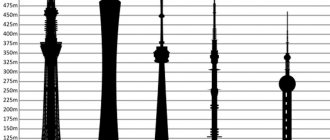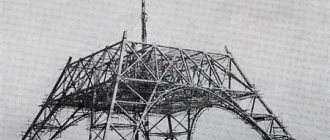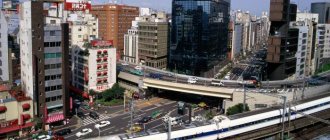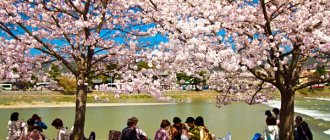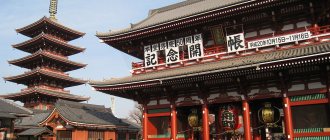The world's tallest wooden skyscraper will be built in Tokyo (11 photos)
Author: Varvara Lyutova
17 February 2021 08:50
Community: All kinds of urbanism
Tags: Cities of the future Urban environment Japan garden city wooden skyscraper landscape design landscaping Tokyo
4506
11
Japanese architects have developed a design for the world's tallest wooden building, 350 meters high. It is planned to turn the 70-story skyscraper into an “urban forest”, arranging vertical lawns on it, and thereby giving city residents a feeling of closeness to nature. The Japanese plan to complete construction by 2041.
0
See all photos in the gallery
0
Source:
Japanese architects have developed a skyscraper project that will completely change the urban appearance of the Japanese capital. Built entirely from wood, the 70-story skyscraper will house housing, shops, offices and even a hotel, making it the tallest building in Japan and the tallest wooden structure in the world. According to the authors of the project, it will turn the center of Tokyo into a forest park and help the Japanese capital become an environmentally friendly city. Construction will cost approximately $5.9 billion.
0
Source:
As can be seen from the comparative illustration, the Tokyo skyscraper will be significantly taller than the wooden buildings existing in the world today. The author of the skyscraper project was the Tokyo company Nikken Sikkei, and its construction will be carried out by the Sumitimo Group. Both companies are among the elite of Japanese business. It is not yet known what types of wood the skyscraper will be built from. According to the architect, the construction will take 200 thousand cubic meters of wood, which will make up 90% of the structure. Additional reinforcements against the wind will be added to the building frame and enhanced seismic resistance will be provided. But the main thing will be the environmentally friendly design of the building: the roof, balconies and even the walls will be covered with living growing greenery, and the vast free spaces inside the building will be flooded with natural light.
0
Source:
Numerous green spaces will turn the skyscraper into a real garden city.
0
Source:
As the architects plan, the house will be divided into a residential part and public spaces, including offices, shops, a hotel, as well as numerous free spaces inside the building, which will be flooded with natural light and will look like small designer squares.
0
Source:
Compared to a traditional glass and concrete structure, the new building will emit 2,800 tons less carbon dioxide into the atmosphere, helping to preserve the urban environment. Recently, environmental darkness has become more and more understood by architects around the world, but none of them has yet attempted a project of this scale.
0
Source:
“New technological breakthroughs in building technology and the production of wood composite materials are now opening up exciting prospects,” says architect Riccardo Tossani, who designed the Mount Fulzi Retirement Home, Japan’s tallest timber building today.
0
Source:
According to Tossani, composite wood materials are ideal from an environmental point of view because they are made from renewable resources and can be easily recycled.
0
Source:
According to experts, the most difficult thing for a construction company will be to bring the building into compliance with fire safety regulations in force in Japan.
0
Source:
For decades, the Japanese avoided using wood for residential buildings because of its flammability, after incendiary bombs easily reduced entire neighborhoods to smoldering firebrands during World War II. But now, apparently, the time has come to return to traditions.
0
Source:
Today, unspoken bans on the use of wood in the construction of public buildings are gradually dying out. Thus, the building of the new national stadium, which is being built in Tokyo for the 2021 Olympic Games, is being built using wooden materials. According to Tossani, wood is an ideal building material for Japan: it is easily accessible, easy to process, and suitable for seismically turbulent areas. “Wood absorbs seismic shocks, unlike concrete, which is not flexible and is more susceptible to destruction during an earthquake,” says the architect.
Source: - translated specifically for
Related links:
- Amazing toilets in Tokyo
- Vibrant Japan in photographs by Naohiro Yako
- Japanese woman faces prison for catching too smart crow
- Fashionable characters on the streets of Tokyo
- Heavy snow fell in Tokyo. The Japanese got inspired - take a look at their snow creations!
subscribe to the “All Urbanism” community
Tags: Cities of the future Urban environment Japan garden city wooden skyscraper landscape design landscaping Tokyo
Did you like the post? Support Chips, click:
74 23 51
Liked
51 2
32
Partner news



